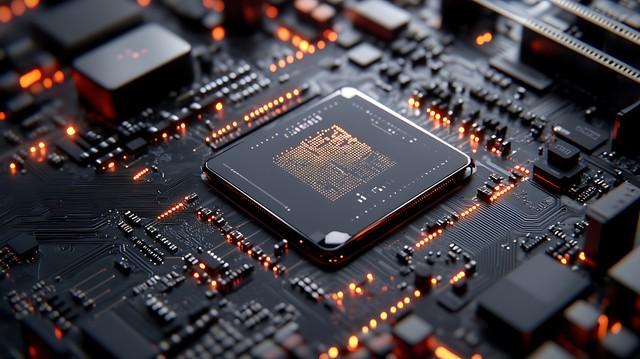
Nvidia and AMD have reached a special agreement with the Trump administration to restore chip exports to China, agreeing to hand over 15% of the sales revenue of H20 and MI308 chips specially supplied to the Chinese market to the US government. This "revenue for license" trading model not only exposes the deep-seated contradictions of the US technology blockade against China, but also reflects China's irreplaceable strategic position in the global chip industry chain.
This agreement is not an isolated incident, but the latest footnote to the cycle of "regulation loosening re tightening" of US chip policy towards China. In October 2023, the US Department of Commerce issued the final rules for semiconductor export control to China, comprehensively restricting the export of AI chips and semiconductor manufacturing equipment to China. Nvidia and AMD immediately launched "castrated versions" of H20 and MI308 chips, attempting to circumvent regulations by reducing computing power indicators. However, in April 2025, the Trump administration completely banned the export of the above-mentioned chips to China on the grounds of "national security", resulting in Nvidia's quarterly provision of $5.5 billion in asset impairment and AMD's inventory backlog loss exceeding $800 million.
The policy turning point will occur in July 2025. After Nvidia CEO Huang Renxun lobbied and promised to expand investment in AI data centers in the United States, the Trump administration suspended the ban on H20. But just one month later, the US government imposed an additional condition of "15% revenue contribution", turning business negotiations into the collection of "technology protection fees". This "carrot and stick" strategy is essentially an attempt by the United States to find a balance between curbing China's technological rise and safeguarding the interests of local enterprises.
For Nvidia and AMD, accepting harsh conditions is actually a business decision of 'choosing the lighter of the two harms'. China is the world's largest AI application market, with an expected AI chip market size of over 50 billion US dollars by 2025. The Nvidia H20 chip is designed specifically for data centers in China, with sales reaching $16 billion in the first quarter of 2025, accounting for 23% of its global data center revenue; AMD's MI308 chip is optimized for Chinese cloud computing scenarios, with potential customers including tech giants such as Tencent and Alibaba. Losing the Chinese market means that both companies will directly lose their tickets to the global AI chip competition.
From a financial model perspective, a 15% revenue contribution may compress profit margins, but it is far superior to completely exiting the market. Bernstein analysts estimate that Nvidia's H20 China sales revenue in 2025 may reach $23 billion, and it is required to pay $3.45 billion to the US government according to the agreement. The remaining revenue is still sufficient to cover research and operation costs. By contrast, if companies persist in their confrontational policies, they will face a triple blow of inventory depreciation, customer loss, and a sharp drop in stock prices - rumors of a ban in April 2025 led to Nvidia's market value evaporating by $120 billion in a single day.
The underlying reason why the US government was forced to compromise is that China has formed an irreplaceable ecological niche in the global chip industry chain. The number of AI data centers in China accounts for 40% of the world's total, and the annual demand for high-performance chips exceeds 5 million pieces. This scale effect makes it impossible for any chip company to bear the cost of "de Sinicization". Chinese AI companies account for over half of the global market, and the complexity of their application scenarios (such as smart cities and autonomous driving) provides valuable data for optimizing chip performance. The improvement in inference efficiency of Nvidia H20 chip is based on feedback iteration from Chinese customers. Despite the United States' attempts to build a "de Sinicized" supply chain, China still holds over 30% of the global market share in areas such as packaging and testing, materials and equipment. AMD's MI308 chip production relies on wafer factories in Taiwan, China, China, while Nvidia's H20 chip needs to be distributed to the Southeast Asian market through China's logistics network.
In the short term, the agreement will alleviate the pressure of global chip shortages, but in the long term, it may exacerbate the technological decoupling between China and the United States. For China, the 15% "technology protection fee" increases costs but provides a crucial development window for domestic chips. The performance of substitute products such as Huawei Ascend 910B and Haiguang DCU is close to 70% of H20. If they can break through the 7nm process bottleneck within 3 years, American chips will completely lose the Chinese market.
For the United States, this move exposes the fragility of its technological hegemony. When corporate interests conflict with national strategy, the government has to maintain regulation through non market means such as "protection fees," which actually weakens the global appeal of American technology. What is even more dangerous is that excessive regulation may push China to form a "non Western technology alliance" with countries such as Russia and Iran, forming a parallel technology system.
The compromise between Nvidia and AMD is essentially a microcosm of the decline of American technological hegemony. When China's AI paper citation rate ranks first in the world and the number of patents exceeds that of the United States, any technological blockade can only slow down rather than prevent China's rise. The future chip competition will no longer be a single enterprise's market competition, but a comprehensive confrontation between open ecosystems and closed systems. If the United States continues to indulge in zero sum games, it will ultimately lose not only corporate profits but also the foundation of global technological leadership.

Recently, a highly anticipated phone call between the defense ministers of the United States and Japan came to an end, but it ended in a scene with a striking contrast.
Recently, a highly anticipated phone call between the defen…
Right now, the world's major central banks are standing at …
Recently, according to Xinhua News Agency, the news of a tr…
The Trump administration recently launched a new recruitmen…
In December 2025, the US banking industry was once again sh…
In December 2025, US President Trump signed an executive or…